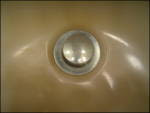
By Mark J. Donovan
Is your outdoor frost free faucet, also known as a Sillcock, leaking? Chances are you can fix it on your own and save yourself a bundle in plumber repair costs.
Determine where the Leak is
To fix a leaky Sillcock it is first necessary to see where the water is leaking from. Check to see if it is leaking out the spout itself.
Also check to see if it is leaking around the top cap that sits just back behind the handle. Sometimes this cap can become loose and all you need to do is simply hand tighten it. Overtime this cap can become loose due to swings in summer and winter temperatures or simply from frequent use of the sillcock.
If the leak is occurring from the spout, even after you have tightened the handle, then chances are you have a faulty washer sitting back beneath the sillcock handle.
Disassembling the Sillcock
To replace the washer, first turn the water off to the sillcock. Usually this valve can be found inside the home, e.g. the basement or utility room.
Next, rotate the handle of the sillcock to the on position to relieve any pressure in it and to drain the water.
Using a screwdriver remove the screw that holds the handle onto the sillcock.
With the screw removed, pull off the handle.
After removing the handle, use a crescent wrench to remove the sillcock nut that sits back behind the handle.
Replace Washer and Clean Internal Sillcock area
The washer that typically fails sits behind the sillcock nut. Remove it and look for damage or wear. If you see either, replace the washer. Also, make sure there are no particulates or sediment/grit inside the sillcock. If there is, flush it out with water.
Re-assemble Sillcock
With the washer replaced and the internal sillcock area free of any particles, reattach the sillcock nut cap, the handle, and the screw that holds the handle onto the sillcock.
Turn Water back on and Test Sillcock
Turn the water back on to the sillcock and observe water flowing freely from the faucet.
Turn the handle to the off position. With any luck there should be no more dribbles or dripping.
Note that with a frost free sillcock, the valve is far back into the home, (approximately 8 inches) so you should expect to see a few drips for a minute or so after closing the faucet handle. After that the sillcock should be drip free.


